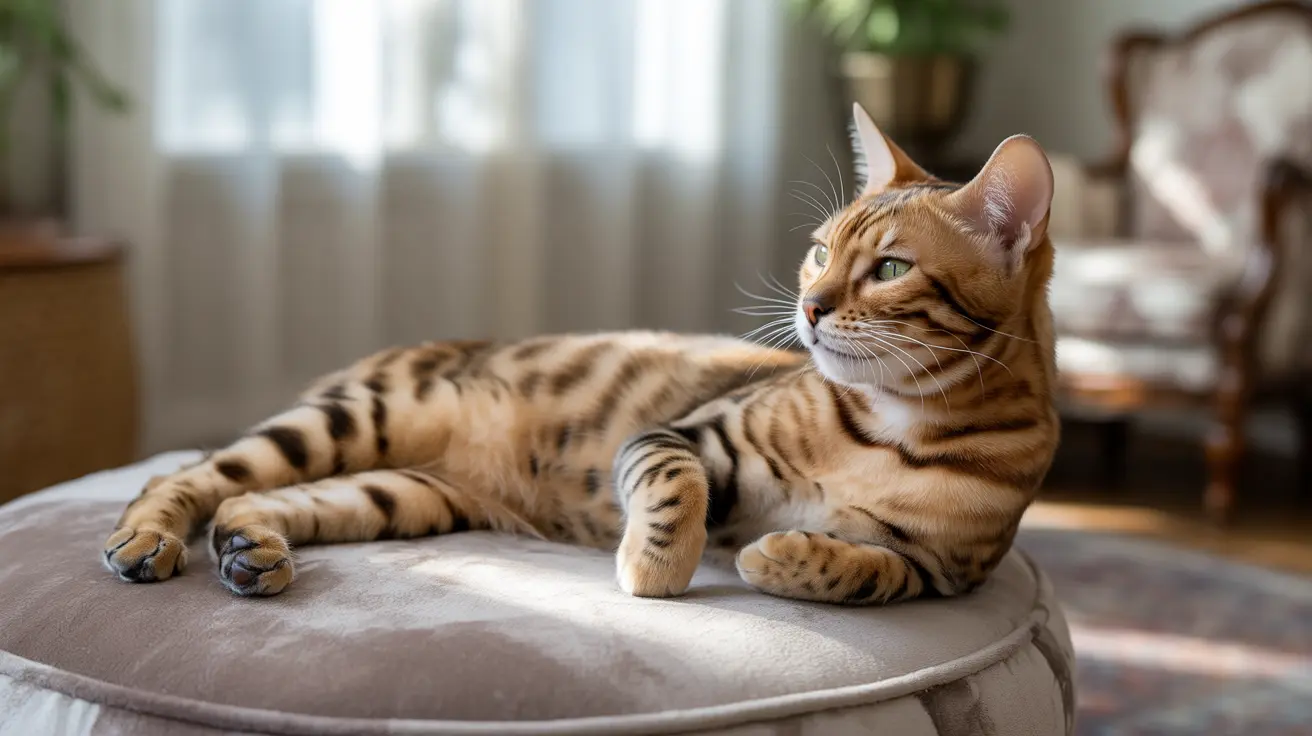When your feline friend curls up beside you and starts purring, you might notice their breathing rate change. Do cats breathe faster when they purr? The answer is yes, but the relationship between purring and breathing rate is more complex than you might think. Understanding this connection can help you better recognize when your cat is content versus when they might need medical attention.
The Science Behind Purring and Breathing
Cats typically maintain a normal respiratory rate of 20-30 breaths per minute when resting. However, during purring, this rate can increase naturally as part of the purring mechanism. The act of purring requires specific muscle contractions in the larynx and diaphragm, which can affect breathing patterns.
The frequency of a cat's purr ranges between 25-150 Hz, creating vibrations that can influence their breathing rhythm. This natural phenomenon doesn't always indicate a problem, but understanding the context is crucial.
Normal vs. Concerning Breathing Patterns
While some increase in breathing rate during purring is normal, there are clear differences between typical and concerning patterns:
Normal Breathing with Purring:
- Gentle rise and fall of the chest
- Relaxed body posture
- Slow, rhythmic purring
- No visible signs of distress
Concerning Breathing Patterns:
- Rapid, shallow breathing
- Labored or noisy breathing
- Open-mouth breathing
- Tense body posture
- Short, choppy purring
When to Be Concerned
If your cat shows any of these signs while purring and breathing quickly, it may indicate an underlying issue:
- Hiding or unusual lethargy
- Loss of appetite
- Blue or pale gums
- Coughing or wheezing
- Unusual body postures
- Persistent rapid breathing even when not purring
Monitoring Your Cat's Breathing
To accurately monitor your cat's breathing rate:
- Wait until they're relaxed and not purring
- Count chest movements for 30 seconds
- Multiply by two to get breaths per minute
- Record this baseline for future reference
Treatment and Prevention
If you notice concerning breathing patterns:
- Schedule a veterinary check-up
- Keep detailed records of symptoms
- Maintain a stress-free environment
- Ensure regular preventive care
- Monitor any changes in purring or breathing patterns
Frequently Asked Questions
Why do cats sometimes breathe faster when they purr?
Cats may breathe faster when purring due to the muscular effort required for purring, emotional state, or underlying health issues. In many cases, a slight increase in breathing rate during purring is normal.
How can I tell if my cat is purring due to stress or pain rather than contentment?
Look for accompanying signs like tense body posture, flattened ears, dilated pupils, or hiding behavior. Contentment purring usually involves relaxed body language and slow, steady breathing.
What are common causes of rapid breathing in cats, and when should I seek veterinary help?
Common causes include stress, pain, respiratory infections, heart disease, and anxiety. Seek veterinary help if rapid breathing persists when not purring, or if accompanied by other concerning symptoms.
Can purring help my cat heal or manage pain, and how does it work?
Yes, purring can help cats heal. The vibration frequency (25-150 Hz) has been shown to promote tissue healing and bone repair. Cats often purr when injured or in pain as a natural healing mechanism.
How do I monitor my cat's breathing rate accurately to ensure their health and well-being?
Count your cat's breaths when they're relaxed and not purring by watching their chest rise and fall for 30 seconds, then multiply by two. Normal breathing rate is 20-30 breaths per minute.
Conclusion
While cats breathing faster when they purr can be normal, it's essential to understand the context and recognize when changes might signal a problem. By monitoring your cat's typical patterns and staying alert to unusual changes, you can ensure their continued health and well-being. When in doubt, always consult with your veterinarian for professional guidance.






